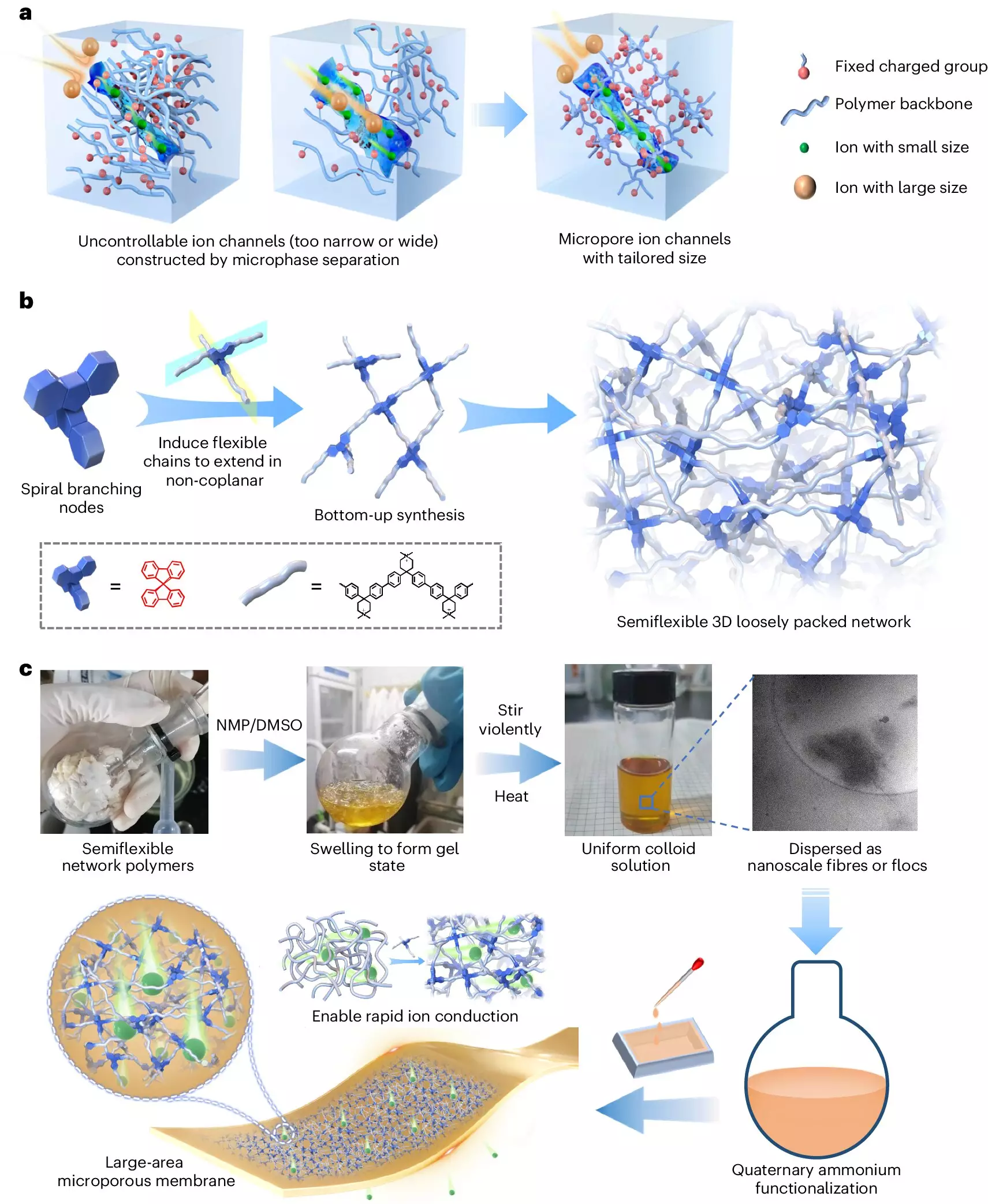In a groundbreaking study published in Nature Sustainability, researchers from the University of Science and Technology of China (USTC) have made significant strides in the development of anion exchange membranes (AEMs). Led by Prof. Xu Tongwen and Ge Xiaolin, the team designed a novel spiro-branched polymeric membrane that boasts highly connected sub-nanometer microporous ion channels, showcasing exceptional performance in flow battery applications.
Traditional methods of developing AEMs have often struggled to strike a balance between ion conductivity, selectivity, and stability. This inherent challenge has limited the overall performance of the membranes and hindered their potential applications in various energy storage systems.
To overcome these limitations, the research team devised a novel spiro-branched polymeric membrane using stereotwisted spiro scaffolds and poly (aryl piperidinium) based on an all-carbon backbone. By incorporating a spiro-branched structure that combines the rigidity of spiro units with the flexibility of branched chains, the researchers aimed to enhance the free volume within the polymer. This strategic configuration was crucial for creating efficient ion transport pathways.
Comprehensive structural characterization techniques, including morphology analysis using scanning electron microscopy (SEM) and transmission electron microscopy (TEM), as well as porosity measurements, unveiled a semi-flexible 3D loosely packed network within the membrane. This structure significantly increased the free volume and fostered the formation of highly connected sub-nanometer ion channels.
Performance evaluation of the spiro-branched polymeric membranes demonstrated exceptional anion conductivity, with chloride ion conductivities exceeding 60 mS cm-1 at 30°C and reaching up to 120 mS cm-1 at 80°C. In flow battery applications, these membranes exhibited superior power density and energy efficiency, enabling rapid charge and discharge cycles at a high current density of 400 mA cm-2. The membranes also displayed excellent chemical stability in vanadium redox flow batteries, highlighting their potential for long-term use in energy storage systems.
This breakthrough in membrane material design not only advances the field of polymer science but also paves the way for more efficient and sustainable energy storage technologies. By offering a new strategy for addressing various energy and environmental challenges, the research opens up exciting possibilities for the future of energy storage.


Leave a Reply